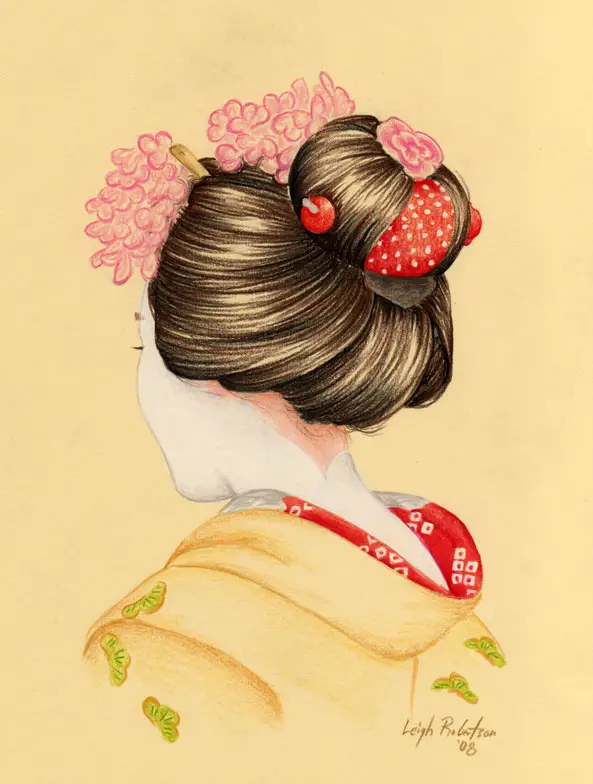Japan is renowned for its rich cultural heritage, and one aspect that reflects this uniqueness is its traditional hairstyles.
Japanese hair styles have evolved over centuries, showcasing a harmonious blend of tradition and contemporary trends.
From intricate updos to sleek, modern cuts, these hairstyles are not only visually captivating but also carry a symbolic significance.
In this blog post, I will delve into the fascinating world of Japanese hair styles, exploring their historical roots, cultural significance, and suggesting products that can help you achieve the perfect look.
READ ALSO: Unleash Your Style with 4 Terrific Fade Hair Style for Man
Table of Contents
READ ALSO: The Ultimate Guide to 4 Blonde Hair Styles: Unleash Your Inner Bombshell
Japanese Historical Hairstyles #1: The Shimada Hairstyle

The Shimada hairstyle, also known as “mage,” gained popularity during the Edo period (1603-1868) and remains an iconic symbol of Japanese femininity.
It features a high bun adorned with hairpins and decorative accessories like flowers or combs.
Achieving this traditional updo requires patience and precision, as it involves careful twisting and pinning of the hair.
The Shimada style is often seen in geisha and maiko, female performers known for their artistic skills and refined appearance.
Japanese Hairdos #2. Chonmage
The chonmage is a traditional Japanese men’s hairstyle that originated during the Edo period.
It is characterized by a shaved pate with a topknot, symbolizing the social status of samurais.
While the chonmage is not as common today, it still holds cultural significance and is occasionally seen in traditional ceremonies or sumo wrestling.
For those who wish to experiment with a modern twist on the chonmage, consider a fade haircut combined with a styled topknot. Achieving a sleek look like this can be easier with the help of a quality hair wax, such as the Shiseido Uno Designing Out Clay.
This product provides a strong hold and a matte finish, allowing you to shape your hair into a precise and refined topknot that pays homage to the traditional chonmage.
Japanese Hair Styles #3. Hime Cut
The Hime cut, meaning “princess cut” in Japanese, is a popular hairstyle for women that exudes elegance and grace.
This style features long, straight hair with short, blunt bangs.
The Hime cut gained prominence during the Heian period (794-1185) and has since become a classic choice for those seeking a refined and feminine appearance.
To maintain the smoothness and shine associated with the Hime cut, consider using a nourishing hair oil, like the Tsubaki Shiseido Extra Moist Hair Oil.
This product contains camellia oil, known for its hydrating properties, and adds moisture and luster to your locks, ensuring they look healthy and glossy.
4. Modern Trends
While traditional Japanese hairstyles continue to inspire, modern trends have also found their place in Japanese hair fashion.
Today, you can find a variety of styles, including edgy cuts, vibrant colors, and intricate braids.
One popular modern trend is the Harajuku style, characterized by bold and unconventional looks that embrace self-expression. Harajuku fashion enthusiasts often experiment with vibrant hair colors, such as pastel shades or vivid hues, to create eye-catching and unique styles.
To achieve temporary vibrant colors without damaging your hair, consider using temporary hair chalk or hair mascaras. These products allow you to explore different colors without long-term commitment or extensive chemical processing, giving you the freedom to express your creativity while keeping your hair healthy.
Conclusion
Japanese hair styles showcase the country’s deep-rooted cultural traditions while also embracing modern influences. Whether you desire a traditional Shimada or want to explore contemporary trends, these hairstyles offer a wealth of inspiration.
Photo Credits: My Life in a Book